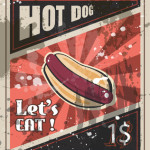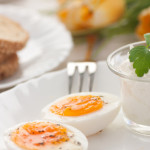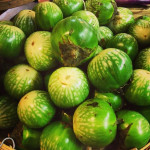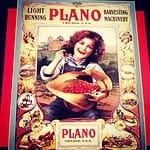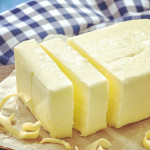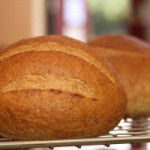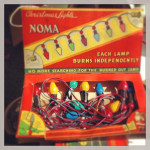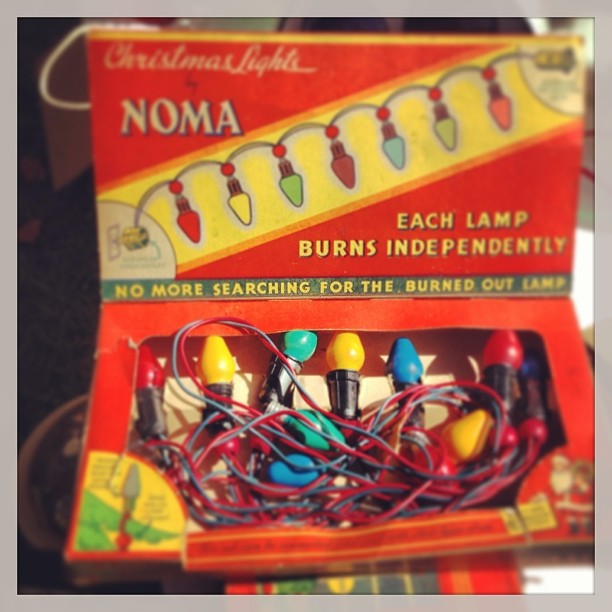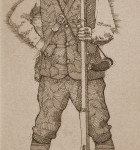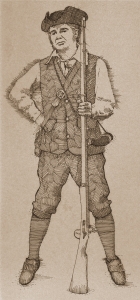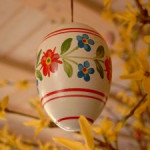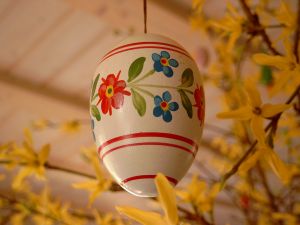I have made a lot of mistakes falling in love, and regretted most of them, but never the potatoes that went with them. -Nora Ephron
The noblest of all dogs in the hot dog; it feeds the hand that bites it. – Laurence J. Peter
Food is the fuel for your day's activities, so it makes no sense at all to eat your biggest meal at night when it's all behind you. – Laurel's Kitchen
Food is the most primitive form of comfort. -Sheila Graham
People who love to eat are always the best people. – Julia Child
If You're Afraid Of Butter Use Cream! – Julia Child
Bread: Legend And Lore
Bread – “The Symbol of Friendship & Hospitality.” In ancient times many cultures believed bread was a Gift from God. Live a good life and “Break Bread With Friends!
English – “Bread is the Staff of Life.”
Russian – “Bread is the symbol of friendship.”
Spanish – “All sorrows are less with bread.”
Italian – “Bread is all food, the rest is merely accompaniment.”
German – “Bread is the symbol of home and family.”
French Saying – “As good as bread.”
Danish – “Bread is better than the song of the birds.”
American Indians danced the “Bread Dance” for prosperity and good crops.
Slavic Proverb – “Without bread even a palace is sad, but with it a Pine Tree is Paradise.”
© Victoria Hart Glavin
10 Steps For Staying Happy Through The Holiday Season
Thanksgiving is almost here which marks the beginning of the holiday season. With so many holiday pressures often times we forget what truly is important. We are busy shopping, cooking and wondering how to deal with some unsettled family business. Over the weekend I came down with a nasty flu, which is in full swing as I write this. To be sick is no fun to say the least, but I do take it as a sign to slow down and reflect. Here are some ideas for staying happy through the holiday season. I hope that you take time to enjoy the holidays.
Do Something Random For The Fun Of It
What have you always wanted to do, but came up with an excuse not to? What made you happy as a kid? Think about things you did, during the holidays, which were fun during the holidays and relieve them as a grown-up. If you have children then introduce your fond activities to your kids. Go ice-skating, go to a hokey play, watch your favorite movie or read a favorite children’s book.
Give Back
Doing something for others is a powerful thing. Volunteer your time or donate money to a favorite cause or something that speaks to your heart is important. It’s a good thing to do and trust me it will make you feel good.
Take Care Of Yourself
It’s important to do things for yourself. Schedule a mani-pedi or a massage. Take a nap, take a day off and read in bed. Do whatever it is that you need to do to recharge.
Commune With Nature
So often we forget to go outside and do something for nature. Pick up garbage, feed the birds, start a compost pile, rake up leaves or whatever needs doing. You will be doing something good for nature and by being outside you will feel better.
Get Active
It may be chilly outside, but go out for a walk or run anyway. We need the vitamin D and to get our blood pumping. Ride your bike, go skiing or sledding. If you can’t get outdoors then go to your local gym and take an exercise class. It’s important to get those endorphins going.
Try Cooking A New Recipe
Choose a recipe that peaks your interest and try making it. If it’s a big success then perhaps you can duplicate it for a holiday dinner. Even if you don’t make it for a holiday dinner you have it in your back pocket of recipes. If it doesn’t turn out then oh well at least you tried it.
Favorite Childhood Food
Everyone has a favorite childhood food. Growing up in Lincoln, Nebraska my mother used to make something called Runzas. Whenever I need a “childhood comfort shot” I will make Runzas (thank goodness my mother left me the recipe). My husband grew up Italian in Castro Valley. During the holidays his aunt would bring an Italian rum cake to the family gatherings. My husband has been searching for this cake for over 40 years, but can’t seem to find it. I’ve tried several times to duplicate it from his description. The point here is, think about what your favorite foods were as a child. Try and duplicate them and share them with the people that you love. Trust me…food and memory are powerful things.
Honor Your Ancestors
Holidays can be emotional. We all have both happy and sad memories of people who have passed away. One way to honor those who have passed away is to make their favorite foods. Another is to watch an ancestor’s favorite movie. My father-in-law’s favorite movies was, “It’s A Wonderful Life.” After he passed away we would take the whole family and go to see, “It’s A Wonderful Life” at the local movie theater. Not one of us walked out of the theater with dry eyes. It was powerful, healing and an important holiday ritual. Take some quiet time to reflect and to be grateful for those people who are gone and were important in your life.
Forgive Friends & Family
Oftentimes living friends and family can be an emotional challenge. Forgive them. Lift the weight off of yourself and simply forgive them. This doesn’t mean that you should get right back into dysfunction (set boundaries and limitations). Deal with conflicts from your highest level of goodness and love.
Make Amends & Forgive Yourself
We have all wronged people that we love. Examine your past emotions and motivations in situations that are nagging your heart. Make amends; tell that person you are sorry. There is no need to go into “yeah but.” Simply “I am sorry I did fill in the blank.” Forgive yourself as well. Most of us are hard on ourselves, which creates stress whether we know it, or not. We all make mistakes. Forgive yourself. At the end of the day, at the end of the holidays the happy memories will not come from presents or material things as much as from genuinely connecting and appreciating your family, friends and yourself.
Today is Constitution Day (Constitution Week is from Sept 17th – Sept 23rd), which commemorates the formation, and signing of the U.S. Constitution by thirty-nine brave men on September 17, 1787, recognizing all who, are born in the U.S. or by naturalization, have become citizens. Our Constitution was signed on September 17, 1787, and after an extended period of national conversation and with the promise of a bill of rights, it became the supreme law of the land. We are a proud Nation of immigrants. Throughout our history, immigrants have embraced the spirit of liberty, equality, and justice for all – the same ideals that stirred the patriots of 1776 to rise against an empire, guided the Framers as they built a stronger republic, and moved generations to bridge our founding promise with the realities of time.
Many people wonder what it was like in those days. What did people eat? Today, it is possible to travel from coast to coast, at any time of the year, without feeling any need to change your eating habits. Sophisticated processing and storage techniques, fast transport, and a creative variety of formulated convenience food products have made it possible to ignore regional and seasonal differences in food production – if it is desirable or necessary for personal reasons.
It was not always so. As early Americans moved about, they had to change their eating habits to fit local conditions. Climate was one of the major limiting factors, but soil water and other vegetation play a part. It’s easy to romanticize the food supply of early America, and there is no question that in many ways it was a vast improvement over that available in many of the immigrant’s homelands. Inadequate yields, seasonal availability of produce, nutrition-robbing preservation techniques, constant labor, continual attention to schedules and danger of contamination were some of the factors bearing on the food supply that sustained our forefathers and foremothers as they developed our country.
Most early immigrants from Europe were accustomed to a limited, monotonous diet. Fresh meat was an infrequent main course on the tables of the working classes. Two meal’s worth of meat per week was regarded as good treatment for a servant. Game was the property of the Royal Family in most countries, and killing a deer was a capital offense. “Milk, butter and cheese are the laborers dyet, and a pot of good beer quickens his spirit,” said Breton, an English author, in 1626.
Only a handful of vegetables were known in Europe, prior to the discovery and settling of the New World. The short list included root vegetables such as beets, carrots, radishes, turnips and parsnips, plus cabbages, onions, leeks and lentils. There was a considerable variety of fruits and berries, but they were available only during a short harvest.
To Be Continued…
Easter celebrates the resurrection of Jesus, but is also associated with popular symbols such as eggs, candy, bunnies and food. Here is a look at the origins of these beloved symbols.
The Easter Lily
The white blossoms of the lily symbolizes the purity of Jesus. The trumpet-shaped flower that blooms in the spring also symbolizes new life and the resurrection of Jesus Christ. People use the flower to celebrate and enjoy the very essence of the Easter season.
Hot Cross Buns
A favorite during spring and the Easter season. Hot cross buns are a sweet, yeast leavened, spiced roll made with currants or raisins. They have long been a symbol of Good Friday. Each bun has an icing cross on top to signify the crucifixion.
The Butterfly
The butterfly’s unique life cycle is meant to symbolize the life of Jesus Christ. The first stage, the caterpillar, stands for his life on Earth. The cocoon stage portrays the crucifixion and the burial of Jesus. The final stage, the colorful butterfly, represents Jesus rising from the dead and the resurrection.
Easter Baskets
In Germany, children made nests in which the “Osterhase” or Easter Bunny could lay his colored eggs. The nests were replaced with baskets once the tradition was brought to the United States and the Easter contents were expanded to include candy and other treats.
Easter Ham
In the United States ham has become a traditional Easter dish. In the early days, meat was slaughtered in the fall. There was no refrigeration so the fresh pork that wasn’t consumed during the winter was cured for spring. This made ham a natural choice for the celebratory Easter dinner.
Easter Egg Hunts & Rolls
The first official White House egg roll took place in 1878 under the presidency of Rutherford Hayes. Egg hunts and rolls have no religious connection, but some will point out that the roll is a symbolic act for the removal of the stone blocking Jesus’ tomb.
Easter Parade
The origin of Easter parades dates back to the mid-1800’s in New York City. The wealthy used Easter as an opportunity to show off their new spring wardrobe by walking up and down Fifth Avenue after church. Soon the less fortunate started showing up to watch the spectacle and a tradition was born.
Easter Candy
Second only to Halloween in candy sales, Easter is a holiday for children and adults with a serious sweet tooth. Chocolate eggs and candy shaped like bunnies or eggs are extremely popular. Also, jelly beans are often associated with the holiday due to their egg-like shape.
The Egg
Easter eggs are likely linked to pagan traditions, but eggs have long been used to celebrate spring and the idea of renewal. It’s not unusual that in almost all ancient cultures, eggs are held as a symbol of life. At the Passover Seder, a hardboiled egg dipped in salt water symbolizes both new life and the Passover sacrifice offered at the Temple of Jerusalem.
The Easter Bunny
The cute furry creature is certainly not mentioned in the Bible, but has nonetheless become the most well-known symbol for the spring holiday. The Easter Bunny’s origins are not entirely known, but some stories date his arrival in the United States back to the 1700’s when German immigrants brought their tradition of an egg laying hare called “Osterhase” to the country. Much like children leave cookies for Santa, boys and girls leave carrots out for the Easter Bunny in case he got tired from hopping around all night.


